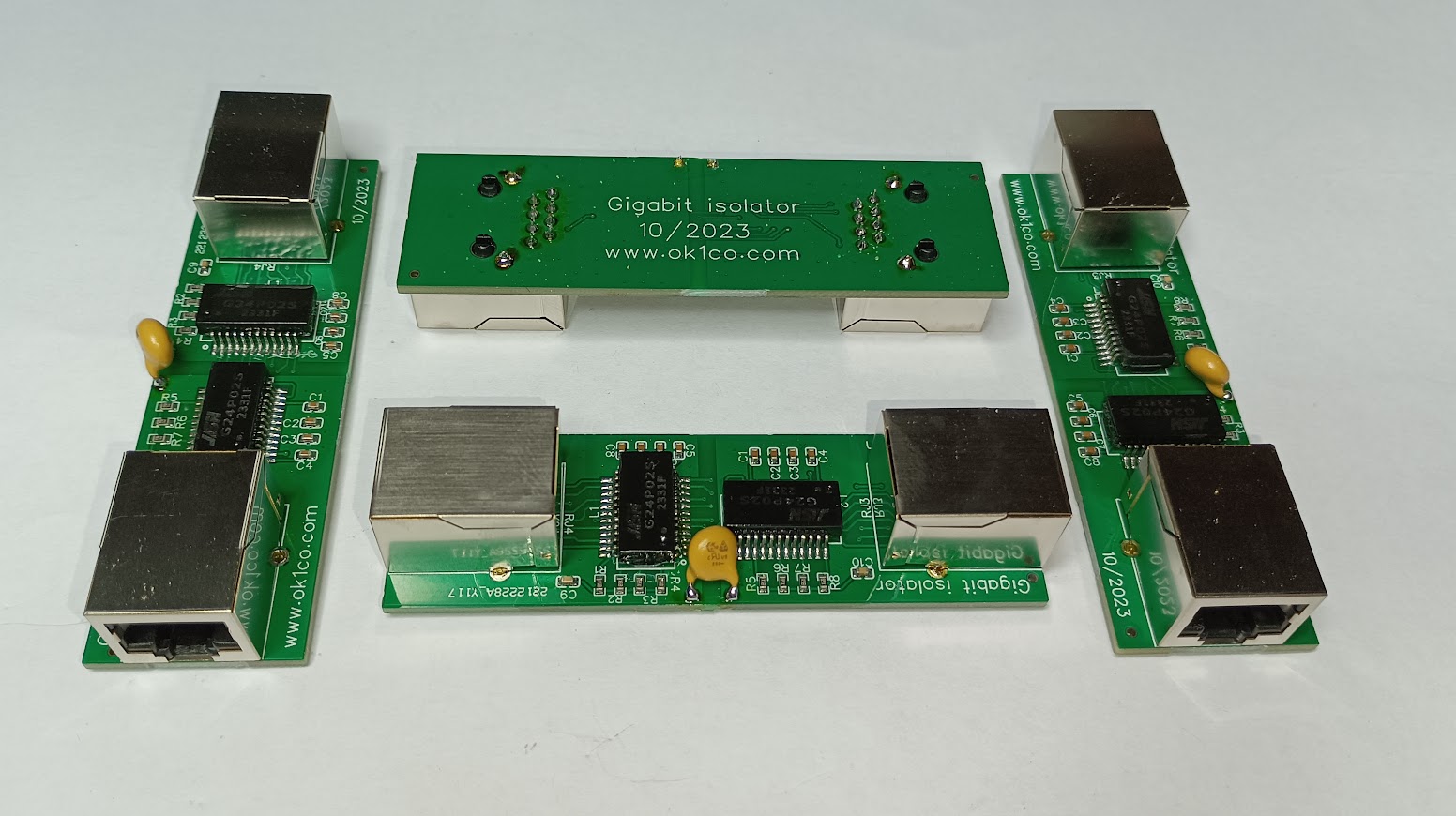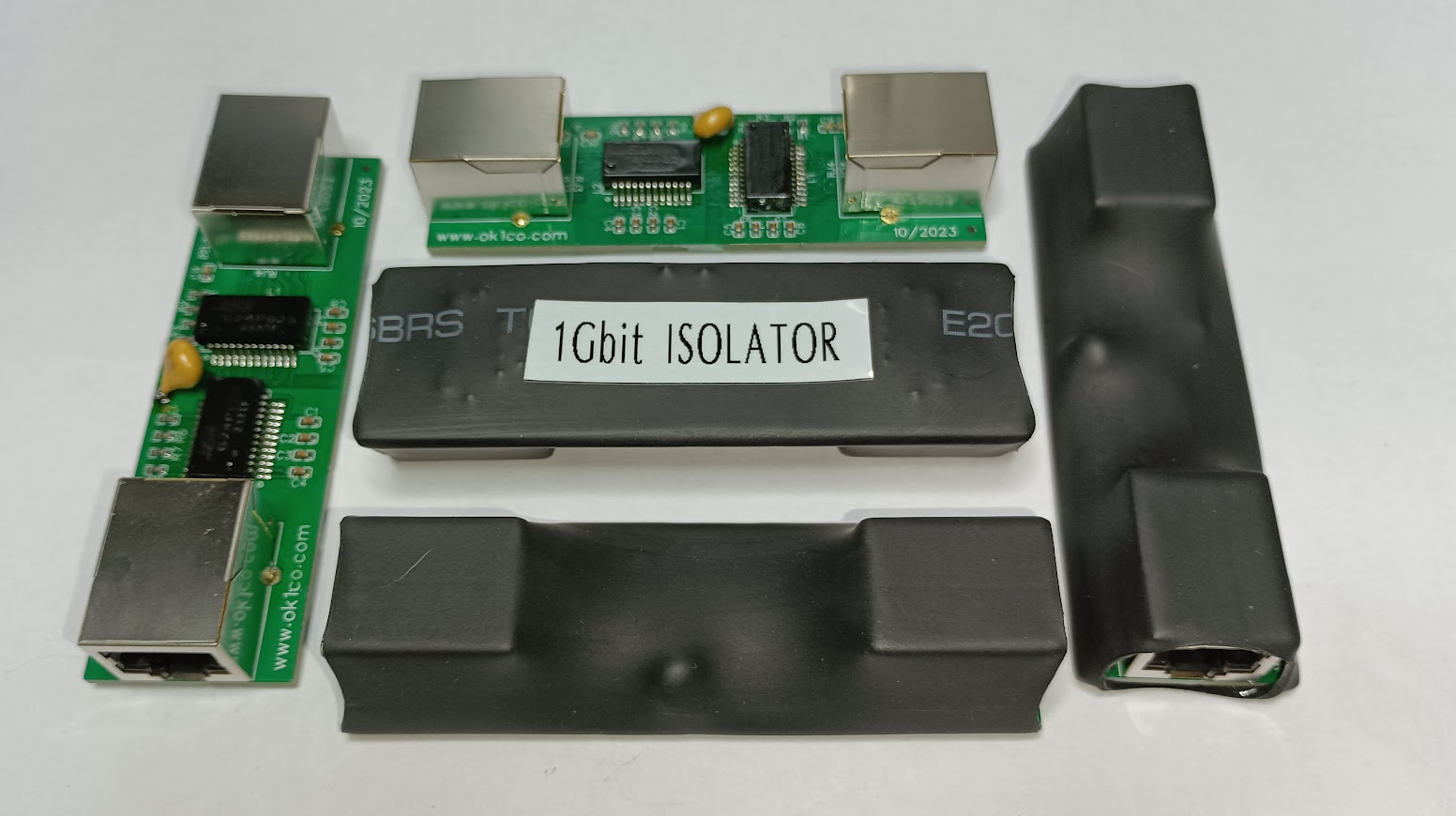Izolátor pro ethernet 1Gbit // Ethernet isolator 1Gbit
CZ V domácnosti máme většinu datových rozvodů pomocí ethernetových stíněných kabelů. Vyzařování těchto kabelů je sice nízké, kabely díky svojí konstrukci a stínění mají velmi dobré vlastnosti, ale i přesto může rušení vyzařováním způsobovat problém při poslechu na krátkých vlnách, případně absorbovat energii z vysílače a ovlivnit tak funkci zařízení. Při radioamatérském vysílání, kdy tyto kabely nejsou daleko od antén je vzájemná možnost ovlivnění velmi vysoká. Dále je možnost vzniku zemních smyček vlivem různých propojovacích cest, což je opět zdroj mnoha rušení, která se velmi špatně vyhledávají a odstraňují. Z uvedených důvodů jsem se rozhodl tyto kabely vzájemně oddělit galvanickou izolací. Již dříve jsem testoval izolátor pro 100Mbit, ale domácí síť mám konstruovanou pro rychlost 1Gbit, sice většina zařízení nevyužívá tuto rychlost, ale pro některá zařízení potřebuji (například pro rychlost kopírování) připojení 1Gbit. Navrhl jsem tedy tuto variantu, kdy jsem původně chtěl propojit je dva konektory s integrovaným oddělením, ale jejich cena je dost vysoká. Vzniklo tedy řešení s využitím levných oddělovacích transformátorů pro 1Gbit a konektorů samostatně a cena celého oddělovače se dostala na pětinu ceny. Výsledek je malý plošný spoj s oddělovači a konektory. Více napoví obrázky. Izolace v celém pásmu KV je více jak 20dB.
EN In our home, we have most of our data distribution using Ethernet shielded cables. Although the radiation from these cables is low, and the cables have very good properties due to their construction and shielding, interference from radiation can still cause problems when listening at short waves, or absorb energy from the transmitter and affect the operation of the equipment. In amateur radio transmissions, where these cables are not far from the antennas, the potential for mutual interference is very high. There is also the possibility of ground loops due to various interconnection paths, which again is a source of many interferences that are very difficult to find and eliminate. For these reasons I decided to separate the cables by galvanic isolation. I have previously tested an isolator for 100Mbit, but my home network is designed for 1Gbit speed, and although most devices do not use this speed, I do need a 1Gbit connection for some devices (for copy speed for example). So I proposed this option, where I originally wanted to connect them with two connectors with integrated separation, but their price is quite high. So a solution was created using cheap decoupling transformers for 1Gbit and the connectors separately, and the price of the whole isolator came to a fifth of the price. The result is a small PCB with isolator and connectors. The pictures will give more hints. Isolation on all HF bands is more than 20dB.


